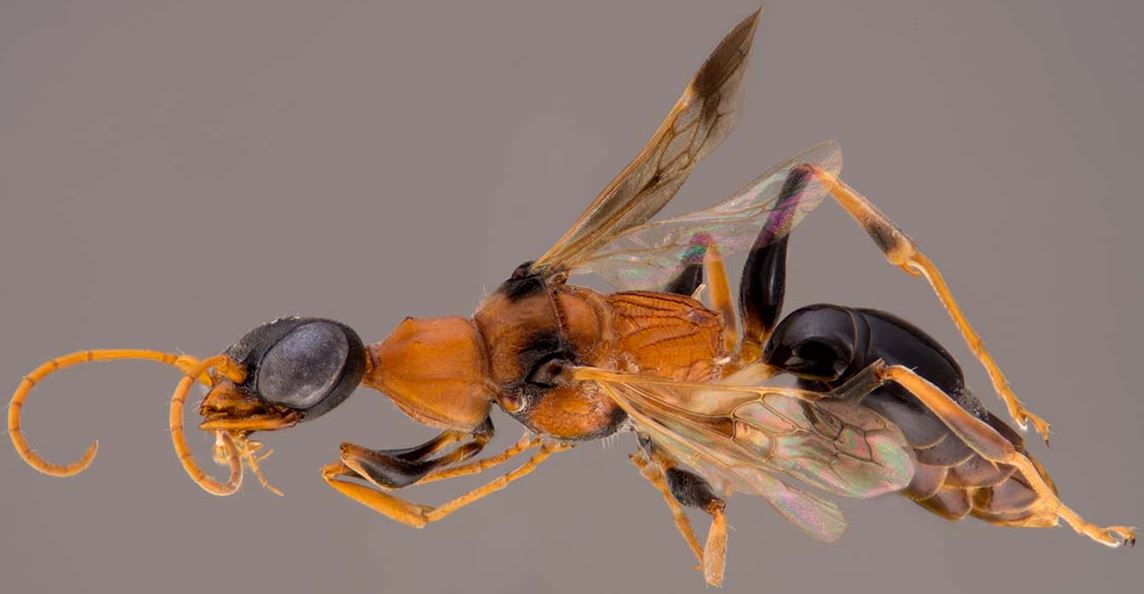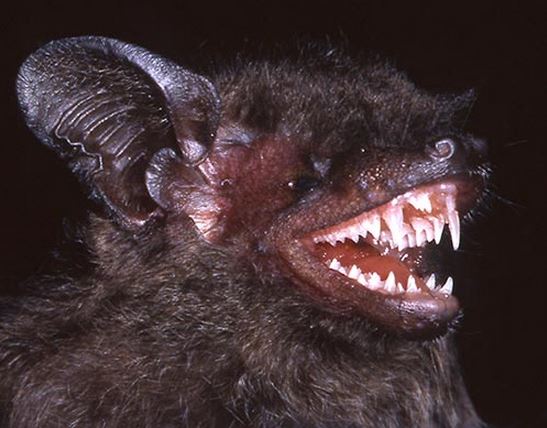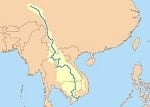A total of 139 new species have been discovered in the Greater Mekong Region, an area that covers Vietnam, Thailand, Myanmar, Laos and Cambodia, says a new report published by the World Wildlife Fund (WWF) Mekong.
The new species discovered last year include a colour-changing thorny frog, a ‘dementor’ wasp that sucks the soul of its victims, a bat with amazing fangs, and the 10,000th reptile species discovered in the world – a stealthy wolf snake.
Scientists also discovered two new types of orchids, a feathered coral, a new crocodile newt, four Thai ‘Princess’ moths, and Phryganistria Heusii Yentuensis (the world’s second-longest insect).
 Soul-Sucking Dementor Wasp (Ampulex Dementor). It steals its prey’s free will with a single sting before eating it alive. (Image: WWF)
Soul-Sucking Dementor Wasp (Ampulex Dementor). It steals its prey’s free will with a single sting before eating it alive. (Image: WWF)
The Greater Mekong Region is teeming with life. Tigers and wild elephants inhabit Thailand’s forests, Irrawaddy dolphins swim in the Mekong River, and giant ibises can be found at the watering holes of Cambodia’s Eastern Plains landscape.
According to WWF Mekong, more than 430 mammal species, 1,200 birds, 800 reptiles and amphibians, 1,100 fish, and 20,000 plant species live in the region.
New species are discovered and described by scientists in the region every year, adding to the fauna and flora list, and highlighting how much more is left to find. From 1997 to 2014, a total of 2,216 new species were discovered in the region.
The magnificent Mekong River
Up to 25% of the annual global freshwater catch of fish comes from the fertile waters of the Mekong River (2.6 million tonnes). It also supplies thousands of farms and rice paddies with nutrient-rich sediment.
 Phryganistria Heusii Yentuensis, the second longest insect in the world. (Image: WWF)
Phryganistria Heusii Yentuensis, the second longest insect in the world. (Image: WWF)
Mekong’s wetlands and forests purify the air and water, protect cities and towns against natural disasters such as storms and floods, and provide raw materials for industry.
The majority (80%) of the region’s 300 million people rely directly on these natural systems for food, livelihoods, security and cultural traditions.
The Greater Mekong Region under threat
Greater Mekong’s critical natural resources are under threat. The Critical Ecosystem Partnership Fund says the region is one of the top five threatened biodiversity hotspots in the world.
The Mekong River’s integrity is threatened by hydropower developments. For the first time ever, the lower Mekong River will be blocked because of construction on the Xayaburi Dam in Laos later this year. This will seriously undermine the free flow of fish and sediment.
 Colour-Changing Thorny Frog (Gracixalus Lumarius). Adults have a pink and yellow colour at night. Their yellow backs fade to a duller brownish hue during the day. (Image: WWF)
Colour-Changing Thorny Frog (Gracixalus Lumarius). Adults have a pink and yellow colour at night. Their yellow backs fade to a duller brownish hue during the day. (Image: WWF)
Communities further downstream have protested against Xayaburi and the imminent construction of the Don Sahong dam close to the Cambodian border. This is just one of 11 planned mainstream dams that will irreversibly transform the Mekong.
Several road and other infrastructure development plans through the region’s wilderness areas will break up habitats and block access to saola and other endangered species.
Add to all this the impact of climate change, with its pressures on the landscape with higher sea levels, rising temperatures and more extreme floods, droughts and storms, and the future does not bode well for the region.
 Long-Fanged Bat (Hypsugo Dolichodon). Its impressive canines set it apart from its closest relatives. (Image: WWF)
Long-Fanged Bat (Hypsugo Dolichodon). Its impressive canines set it apart from its closest relatives. (Image: WWF)
WWF Mekong wrote on its website:
“WWF works with governments, businesses, and civil society to create a sustainable future for the Greater Mekong based on healthy, functioning ecosystems.”
“We are spearheading efforts to protect species, helping businesses develop sustainable supply chains, encouraging sustainable forestry and non-timber forest product management, helping communities and governments adapt to climate change, and promoting the sustainable use of freshwater resources.”
“Scientific exploration has an important role to play in the future of the Mekong region. Fascinating new species like the ones discovered in 2014 can draw more conservation attention to the region, while a thorough understanding of the patterns and distribution of biodiversity can help direct conservation resources to the highest priority areas.”

